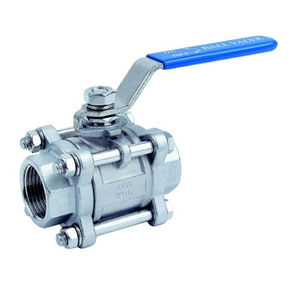
- Hydraulics - Pneumatics
- Valve
- Disc valve
- pneumaticairactuator.com

- Products
- Catalogs
- News & Trends
- Exhibitions
Disc valve pneumaticfor waterfor oil
Add to favorites
Compare this product
Characteristics
- Type
- disc
- Operation
- pneumatic
- Media
- for water, for oil, for chemicals, for gas
- Body
- flange, stainless steel
- Applications
- turbine, tank bottom, for slurries, welding
- Associated function
- discharge
Description
Discharge valve is mainly used for discharging materials at the bottom of the storage tank, reaction kettle, and other vessels. The valve is connected with the equipment and located at the bottom by flange or butt welding, so as to eliminate the residual phenomenon of the process medium usually at the outlet of the vessel. According to the needs of the actual situation, it is divided into upward and downward exhibition types. The Upward type is used for discharging the reactor with the agitator discharging valve; the downward type is used for the reaction kettle discharging of the frame-type anchor agitator.
Upward design discharge valves
The upward type discharge valve is the upward movement of the valve disc (plunger). When the valve is opened, the direction of movement is the same as the medium force, so the opening moment is smaller than the closing moment. When the upper spread valve is fully open, the spool is extended to the tank; the upswing moves inside the valve body just like a normal globe valve. The working principle of the up-spread discharge valve is the up-down valve disc, which eliminates the residual phenomenon of the medium at the bottom of the container. It is mainly installed in the reaction pot with slurry type, turbine type, or propulsion type agitator. When the valve is opened, the valve core can not reach into the reaction pot, so that the material can be discharged dynamically. The discharging effect is good and there is no material accumulation at the bottom of the pot.
Other pneumaticairactuator.com products
Pneumatic On Off Valve
Related Searches
*Prices are pre-tax. They exclude delivery charges and customs duties and do not include additional charges for installation or activation options. Prices are indicative only and may vary by country, with changes to the cost of raw materials and exchange rates.






